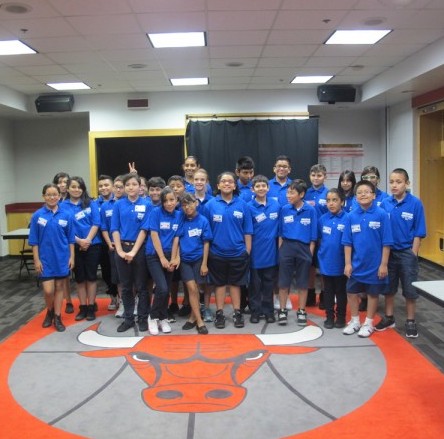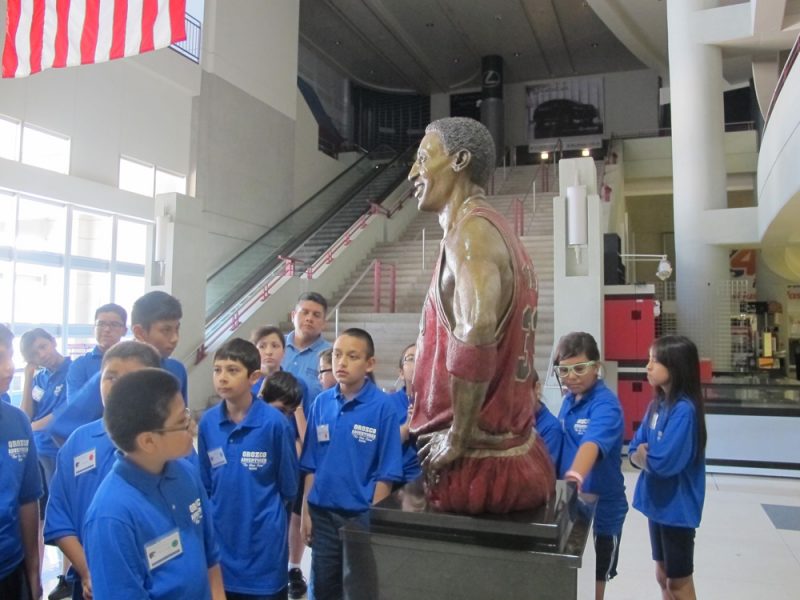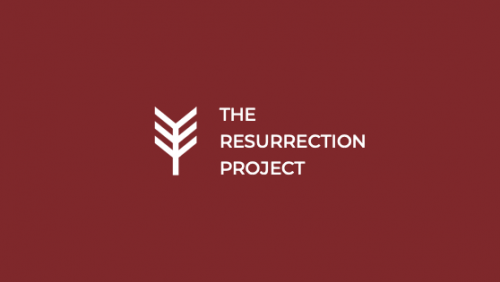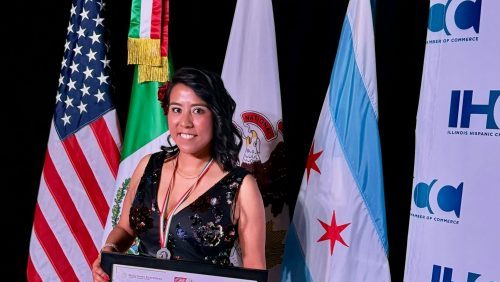Teaching teamwork to the "New Crew"

by Isabelle Barany
“Why is teamwork key?”
Robert Reznar, a physical education instructor at Orozco Community Academy, sees more hands spring up than he can pick. The question he poses to Orozco’s newest students, incoming sixth graders from nearby Cooper Elementary Dual Language Academy, is not just theoretical. After a brief lesson, Orozco’s “New Crew” goes to the United Center for a private tour of the Chicago Bulls’ facilities.
Seated in Orozco’s gymnasium and surrounded, fittingly enough, by basketball hoops, the New Crew scribbles in their notebooks. They discuss how on teams every player has the same goal. They watch a short demonstration on Orozco’s safety policy. Finally, the class brainstorms about the different types of jobs in the building and generate a lengthy list. These lessons and excursions comprise the Orozco Adventure transition program, which was created six years ago by the school to help facilitate the transition between middle school and elementary school. The Orozco Adventure program is part of Elev8, a national initiative coordinated by The Resurrection Project (TRP), managed in Chicago by LISC and funded by The Atlantic Philanthropies.
These lessons and excursions comprise the Orozco Adventure transition program, which was created six years ago by the school to help facilitate the transition between middle school and elementary school. The Orozco Adventure program is part of Elev8, a national initiative coordinated by The Resurrection Project (TRP), managed in Chicago by LISC and funded by The Atlantic Philanthropies.
Every day includes an activity, such as a field trip or physical exercise, which always doubles as a learning opportunity, such as understanding values like respect, organization, kindness, and accountability.
Students learn not just about their school, but also about their city. In addition, the program aims to help the students learn about how they relate to others and even themselves. Reznar describes the program as “both academic and social-emotional.”
The phrase “social-emotional learning” is echoed by Helene Achanzar, TRP’s Education Programs Manager, when speaking about the day’s trip to see the Bulls. “It’s a very creative way of teaching social-emotional ideas such as cooperation and teamwork,” she says. “It also gives students insights into the different types of jobs in the sports industry.”
Achanzar defines social-emotional learning as all of the personal and interpersonal skills that a person needs to be successful, like being a good communicator. “A lot of learning happens outside of the classroom,” she says. She explains that educational programming cannot just focus on the student’s ability academically but rather on the whole child. A student will have a better chance to succeed when they are healthy, safe, and supported by their community.
TRP’s educational programming reflects this philosophy. TRP’s Elev8 program also partners with other organizations to offer after school programs including photojournalism, ballet folklorico, mariachi, and a gardening club.
What makes this initiative unique is that it also provides a variety of services like parent leadership and financial wellness workshops. Students and their families also have access to a health clinic at Orozco that sees everyone, regardless of their ability to pay. TRP has also created a parent mentorship program in Back of the Yards, which trains parents to assist teachers in the classroom.
At the United Center, Orozco’s New Crew sees the Bulls’ trophies, statues, suites, locker room, press box, and the cavernous empty interior of the arena itself. When they are not too busy gaping at sights such as Derrick Rose’s flip flops, the students ask questions, such as the material of the statues and the total number of workers in United Center.
Rob Reznar grins. He tells his new students, “I think that this is going to be a day you remember for a long time.”



